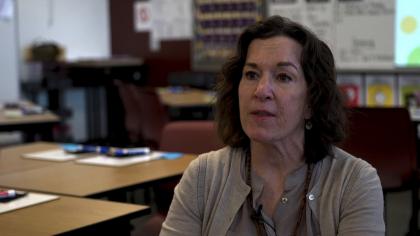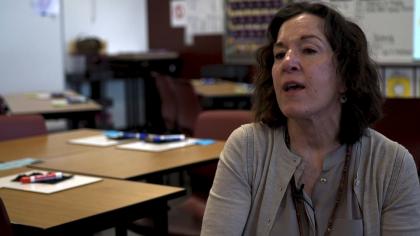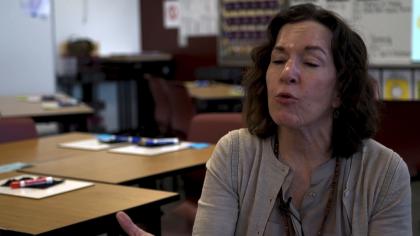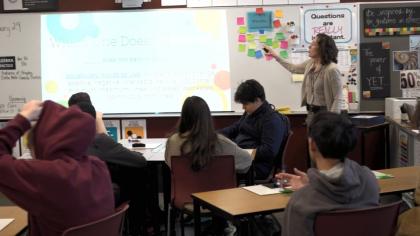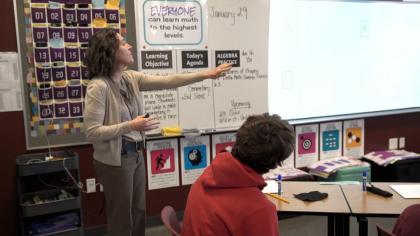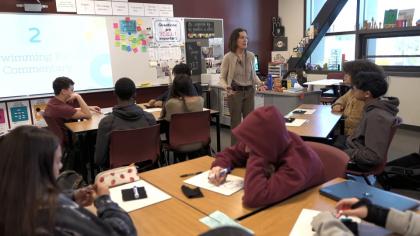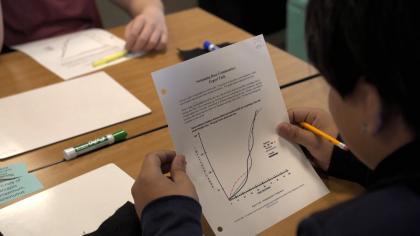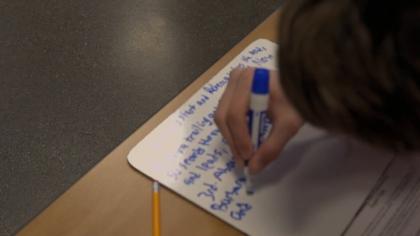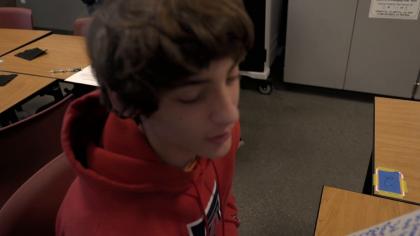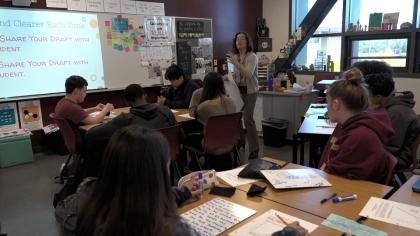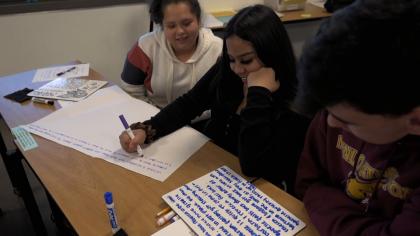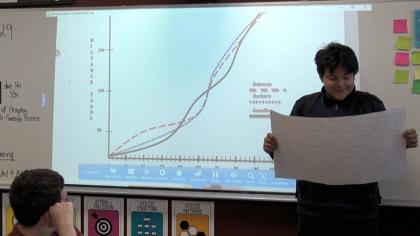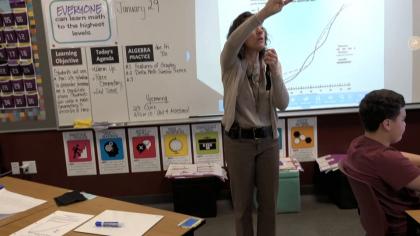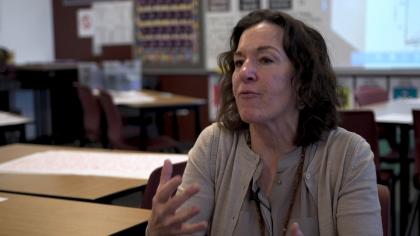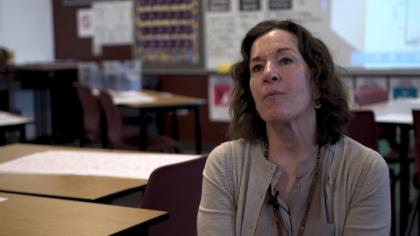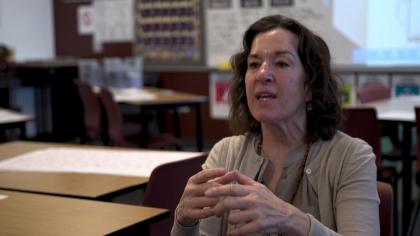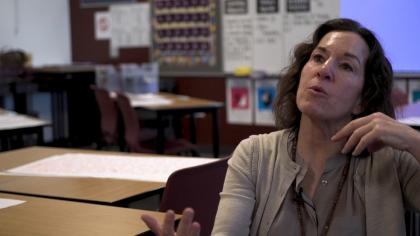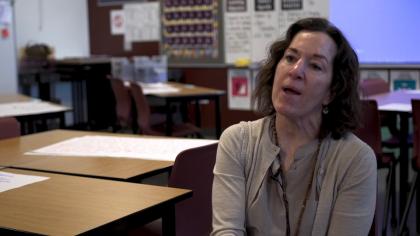Overview
Lisa Hennefarth teaches Algebra I at Menlo Atherton High School in Menlo Park, California. The class documented for this lesson was in a new course, called “A1I Initiative,” which placed all ninth grade students into a heterogeneous group for their mathematics instruction. Students in the high school come from different feeder schools, including schools with wide-ranging demographics (race, class, native language). The A1I Initiative aims to give every student access to Algebra I.
In this lesson, Lisa challenges students to interpret data from a swim meet and to create commentary to reflect the changing data over the time of the race. She engages students in creating connections to the scenario, provides opportunities for them to watch an exemplar swim meet video from the Olympics in which the lead changes multiple times, and then prompts them to use the data given to create an engaging, dynamic, thrilling, and mathematically precise radio commentary recounting the swim race.
This lesson aligns with resources created by the Dana Center aligned with “5 Practices for Orchestrating Productive Mathematical Discussions” (Smith & Stein, 2018). NCTM (2010) defines discourse as “the mathematical communication that occurs in a classroom. Effective discourse happens when students articulate their own ideas and seriously consider their peers’ mathematical perspectives as a way to construct their own mathematical understandings.” In this lesson, Lisa Hennefarth engages her students in each of the five practices: anticipating students’ responses during the lesson, monitoring students’ work on – and engagement with – the task, selecting particular students to present their mathematical work, sequencing students’ responses in a particular order for discourse; and connecting different students’ responses.
“A typical lesson that uses a high-level instructional task proceeds in three phases. It begins with the teacher’s launching of a mathematical problem that embodies important mathematical ideas and can be solved in multiple ways. During this ‘launch phase,’ the teacher introduces students to the problem, the tools that are available for working on it, and the nature of the products that the students will be expected to produce. The space is followed by the ‘explore phase,’ in which students work on the problem, often discussing it in pairs or small groups. As students work on the problem, they are encouraged to solve it in whatever way makes sense to them and be prepared to explain their approach to others in the class.The lesson then concludes with a whole class discussion and summary of various student-generated approaches to solving the problem. During this ‘discuss and summarize’ phase, a variety of approaches to the problem are displayed for the whole class to view and discuss.” (Smith & Stein 2018)
show more


